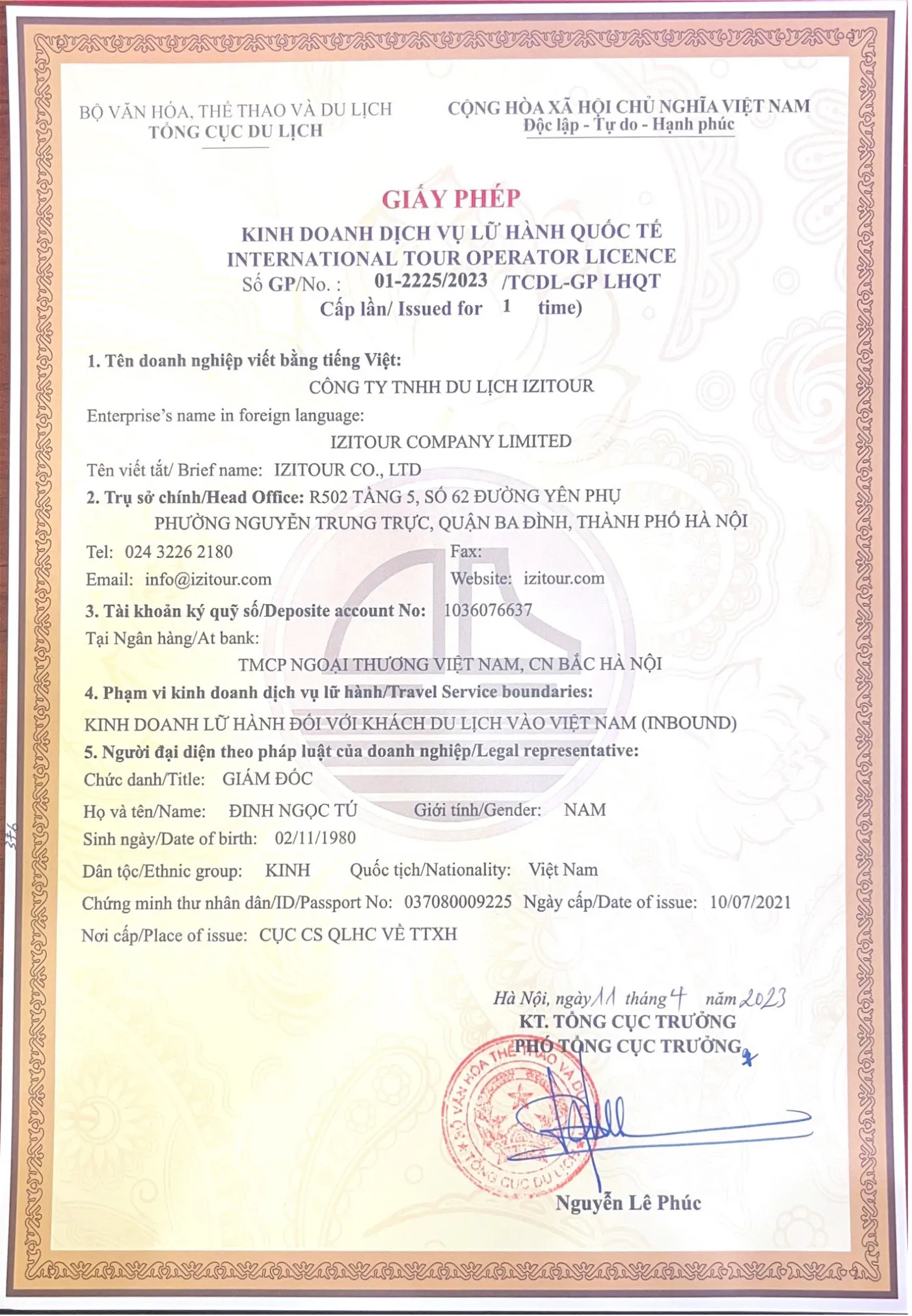Vietnam is a perfect place to explore many different aspects of life. Lifestyle, mindset, people, scenery, etc., vary on the length of the S-shape country, and the significant difference can be experienced in the two biggest cities of Vietnam: Hanoi and Ho Chi Minh City (Saigon or HCMC).
What would you do if you had a chance to travel to Vietnam - an Asian country? Would you stay in one place or explore many places to learn and see more? In most cases, people would choose to travel to many cities. If you intend to start your journey from Hanoi or Ho Chi Minh City, this is an article not to be missed. Many locals have their own views on the differences, but it is much more interesting to learn about it from the different perspectives of travelers from around the world.
1. Difference Between Hanoi and Ho Chi Minh City
1.1. Divergence
Hanoi and Ho Chi Minh City have dramatically transformed over the past three decades. While Hanoi and Ho Chi Minh City have experienced impressive growth over the past 30 years, their paths have diverged in key aspects like economics, politics, and infrastructure.
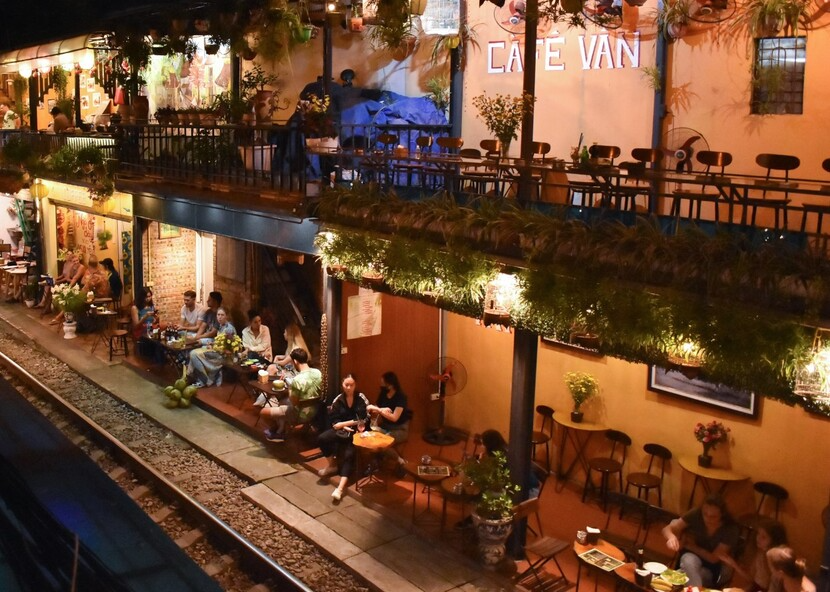
Hanoi Train Street Cafe (Photo: collected)
Hanoi is the capital and second-largest economic city in Vietnam. With a population of 8.5 million people (2023), it has seen steady growth fueled by government investment and a focus on stability. The city has always served as the country's cultural and political center. Traditional buildings interwoven with ancient temples make it more like a traditional Vietnam than Ho Chi Minh City, Vietnam's largest economic centre.
Different from Hanoi, Ho Chi Minh City, the economic powerhouse, has embraced dynamism and emerged as a hub for innovation and entrepreneurship. The city seems younger and more energetic, with about 9 million people. Many multinational companies are headquartered in Ho Chi Minh City. As a result, more foreign residents have come to settle down, and there are many modern skyscrapers, international schools and international hospitals. People from other regions also come to engage in trade and reside. People say that, in this city, even the poor can live optimistically and look to the future.
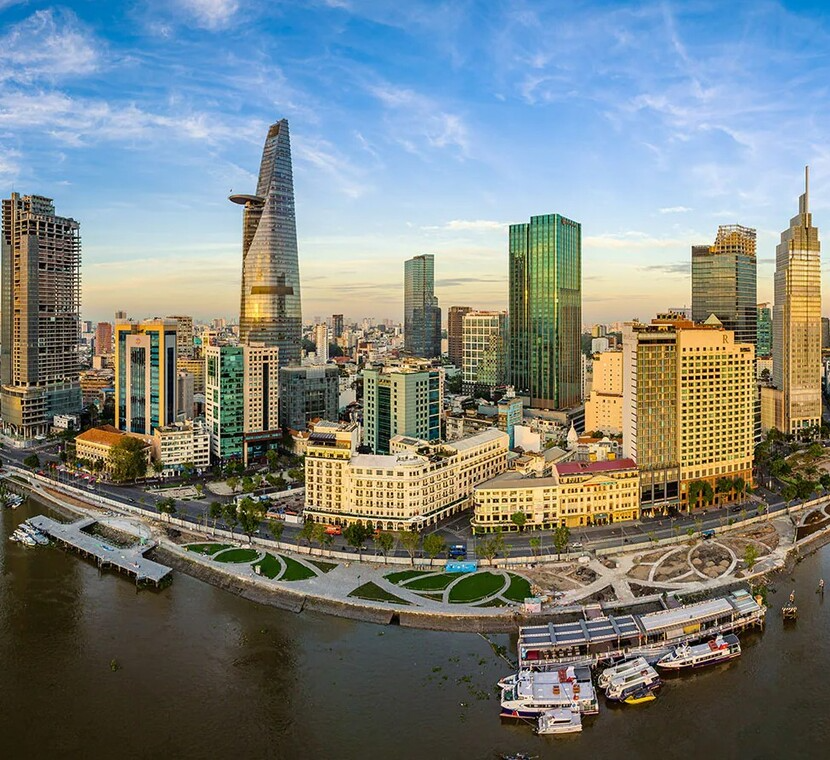
Bach Dang Warf area - Ho Chi Minh City (Photo: collected)
1.2. Lifestyle
When visiting Hanoi and Ho Chi Minh City (Saigon), tourists not only experience the rich culture, delicious cuisine, and historical landmarks but also interact with the local people. The interactions and impressions of the residents can significantly shape the overall travel experience. Here, we explore travelers’ opinions of the people in Hanoi and Saigon, highlighting how these encounters influence their perceptions of the two cities.
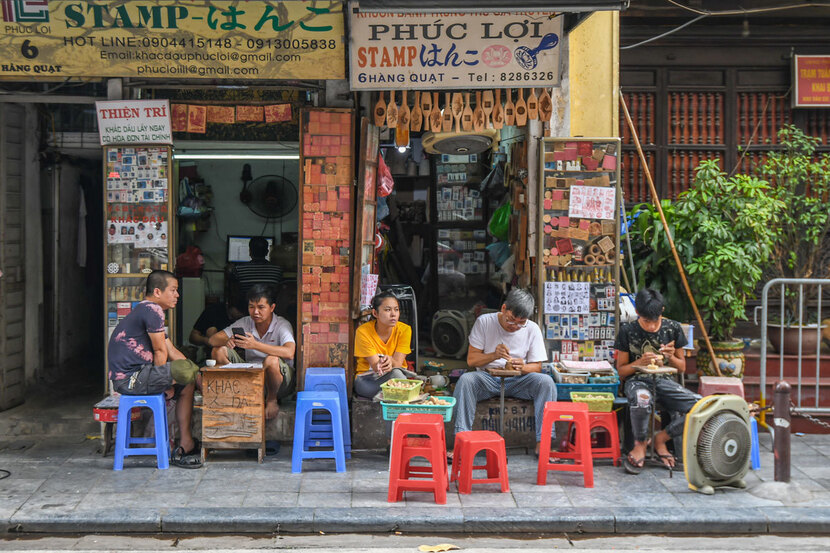
Hanoi Old Quarter (Photo: collected)
Hanoians, with their reserved yet hospitable nature, offer a window into Vietnam’s rich traditions and cultural heritage. Their pride in maintaining historical and cultural practices provides tourists with an authentic and deeply rooted experience.
On the contrary, the people of Saigon, with their friendly, open, and dynamic demeanor, show the city's modern and progressive spirit. The social and community-oriented lifestyle of Saigonese makes the city feel lively and welcoming, allowing tourists to easily immerse themselves in the vibrant local culture.
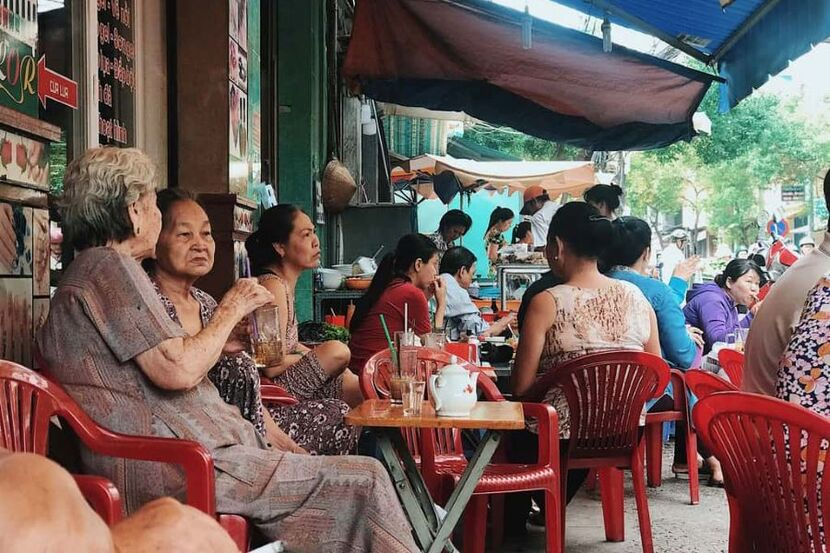
Saigon Sidewalk Cafe (Photo: collected)
Ultimately, interactions with the local people significantly enhance the travel experience in both cities. Whether engaging with the traditional and proud residents of Hanoi or the energetic and sociable locals of Saigon, tourists are likely to find meaningful and memorable connections that enrich their understanding and appreciation of Vietnam.
1.3. Cuisine
Many travelers have reflected Hanoian cuisine with the city's long history. The diverse influence throughout the long history is evident in the use of baguettes in banh mi, rice noodles in pho, green papaya in papaya salad, and bamboo in grilled pork of bun cha,... Moreover, the heart of Hanoi cuisine lies in its focus on fresh, local ingredients and a delicate light balance of flavors.
On the other hand, Ho Chi Minh City, a melting pot of cultures, boasts a cuisine that's bold, adventurous, and bursting with stronger flavor. Southern Vietnamese food draws influences from neighboring Cambodia, Thailand and resulting in sweeter and spicier dishes with a focus on coconut milk, lemongrass, and fiery chilies.

Banh Trang Nuong Saigon (Photo: collected)
Whether enjoying a steaming bowl of Pho in a quaint Hanoi alley or savoring a creative Banh Mi in the bustling streets of Saigon, tourists find that both cities offer unique and enriching culinary journeys. The choice between Hanoi and Saigon ultimately comes down to personal preference, with each city providing a distinctive taste of Vietnam's rich and varied culinary landscape.
1.4. Pricing
Compared to other Southeast Asian destinations, Vietnam offers good value for money. Budget-friendly accommodations, delicious street food, and efficient public transportation make Vietnam an attractive choice. Both Hanoi and Ho Chi Minh City are budget-friendly destinations for travelers, however, there can be slight variations in cost depending on what you're looking for.
Travelers perceive pricing differences between Hanoi and Saigon based on accommodation costs, dining expenses, transportation fares, shopping opportunities, and tourist attractions. Hanoi generally offers a bit more budget-friendly accommodation and a vibrant street food scene, where authentic local dishes can be enjoyed at affordable prices. In comparison, Saigon's larger urban setting may lead to slightly higher dining and transportation costs.
Travelers perceive pricing differences between Hanoi and Saigon based on accommodation costs, dining expenses, transportation fares, shopping opportunities, and tourist attractions. Hanoi generally offers more budget-friendly accommodation and a vibrant street food scene, where authentic local dishes can be enjoyed at affordable prices. You can find hostels for around $5-10 per night, and 3-star hotels start around $30 per night. Meanwhile, prices of Saigon accommodation can be slightly higher than in Hanoi, with hostels starting around $7-12 per night and 3-star hotels around $35 and up. In comparison, Saigon's larger urban setting may lead to slightly higher dining, accommodation, and transportation costs.
Both cities offer diverse options for upscale dining and shopping, with variations in market prices reflecting local demand and tourist influences. Despite these differences, both Hanoi and Saigon provide rewarding experiences that cater to various budgets and interests, ensuring a memorable visit to Vietnam.
1.5. Accommodation
Travelers often find Hanoi's accommodations to be charming and traditional, with many boutique hotels and guesthouses in the Old Quarter showcasing classic architecture and décor. Also, budget travelers appreciate the abundance of affordable hostels and homestays, which offer a culturally immersive experience and easy access to historical and cultural sites. The city's tranquil and culturally rich atmosphere makes it a preferred destination for those seeking a more authentic Vietnamese experience.
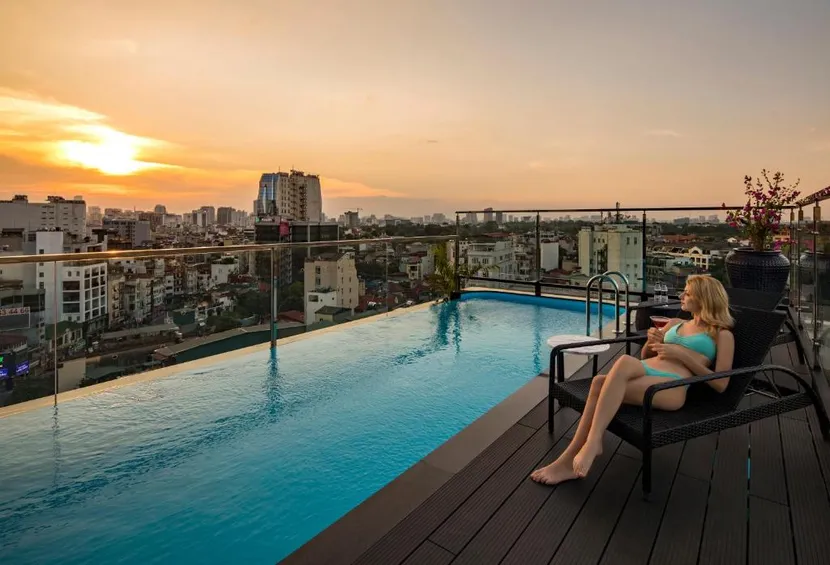
In contrast, Saigon's accommodations are noted for their modern luxury and variety. The city boasts many high-end hotels with amenities like rooftop bars and pools, specifically to business travelers and those seeking comfort and convenience. Saigon's vibrant and dynamic environment is reflected in its diverse range of accommodation options, from luxury hotels in District 1 to eclectic guesthouses in artistic neighborhoods. Proximity to nightlife and dining options adds to the appeal, making Saigon a favorite for travelers looking for a bustling urban experience with modern comforts.
While there are many differences in vibes, quality and pricing, Hanoi and Ho Chi Minh City offer a wide range of options for any traveling purposes.
1.6. Traffic and Transportation
One of the most common yet unique aspects of visiting Hanoi and Ho Chi Minh City (Saigon) is navigating the traffic. Both cities are known for their bustling streets filled with an overwhelming number of motorcycles, cars, and bicycles. For the locals, they seem to have gotten used to this organized chaos but what is it like from the perspective of a traveler?
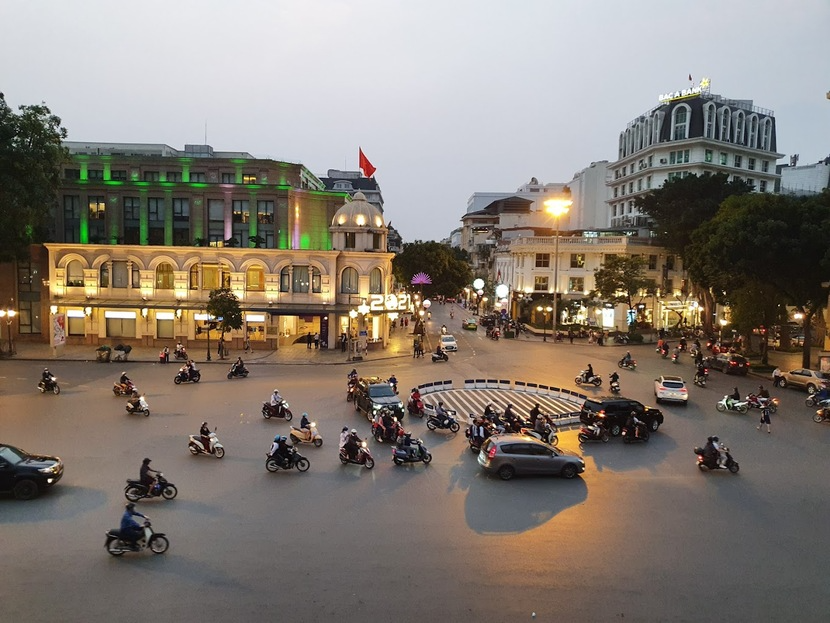
Navigating the traffic in Hanoi and Ho Chi Minh City (Saigon) is a significant part of the travel experience in Vietnam, offering unique insights into the daily life and culture of these bustling cities. Travelers often describe Hanoi’s traffic as dense and chaotic, especially in the narrow streets of the Old Quarter. The constant flow of motorcycles, bicycles, and pedestrians can be overwhelming, and crossing the street is often considered an intimidating challenge. Despite these difficulties, some tourists appreciate Hanoi’s traffic as part of the city’s vibrant cultural fabric, providing an authentic glimpse into local life. Safety concerns are common, with visitors advised to be extra cautious, particularly when crossing streets.
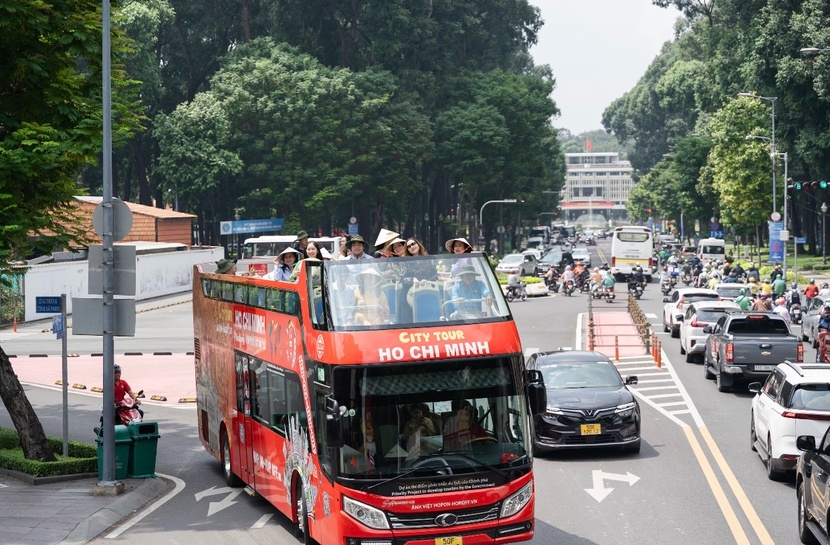
Hop on hop off bus tour Saigon (Photo: collected)
In contrast, Saigon’s traffic is characterized as fast-paced and energetic, with a significant number of motorcycles dominating the broader avenues. The city’s public transportation options, including buses and ride-hailing services like Grab, offer convenient alternatives for navigating the busy streets. While Saigon also suffers from traffic jams, particularly during rush hours, some travelers find its traffic slightly more manageable than Hanoi’s due to the wider roads and more structured flow.
However, safety remains a concern in both cities, and tourists are encouraged to stay vigilant. Overall, the organized chaos offered in Hanoi and Saigon, though challenging, provides a unique and enriching aspect of the travel experience in Vietnam, reflecting the dynamic and lively nature of these two major cities.
1.7. Climate
The climate of a destination plays a crucial role in shaping a traveler's experience. Hanoi and Ho Chi Minh City (Saigon) have distinct climates that significantly influence how travelers feel about their visit. Let's explore how tourists perceive the weather in these two major Vietnamese cities and how it impacts their travel experiences.
Hanoi, located in northern Vietnam, experiences a subtropical climate with four distinct seasons: spring, summer, autumn, and winter. Travelers often appreciate this variety, as it offers different experiences throughout the year.
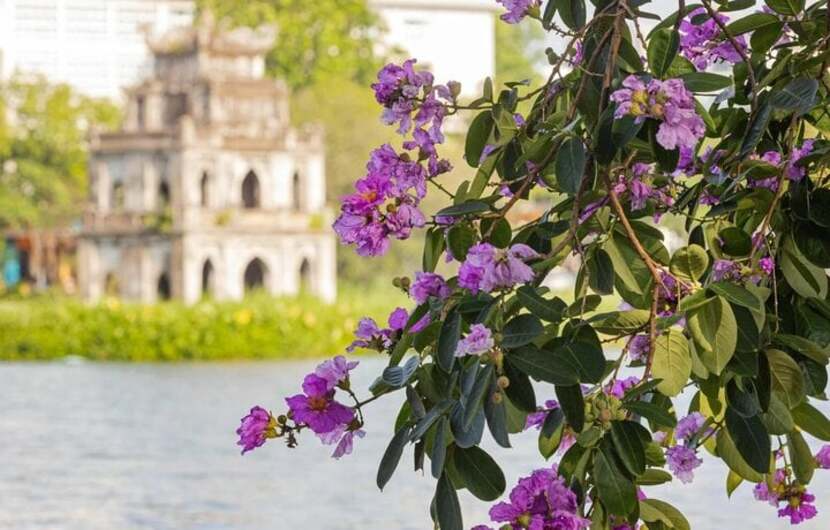
Purple Lagerstroemia flowers grace Hoan Kiem Lake, Hanoi (Photo: collected)
Strangely, Ho Chi Minh City, in southern Vietnam, has a tropical climate characterized by two main seasons: the dry season and the rainy season. This consistent climate contrasts sharply with Hanoi's more varied.
As the result, whether a traveler prefers the varied seasons of Hanoi or the tropical consistency of Saigon depends on their personal preferences and tolerance for different weather conditions. Both cities offer unique and enriching experiences regardless of the season, making Vietnam a diverse and attractive destination for travelers year-round.
1.8. Surrounding options
Travelers seeking historical immersion and breathtaking landscapes flock to northern Vietnam. Where Hanoi is admired for its rich cultural heritage showcased in the Old Quarter's historic streets and temples, along with its renowned street food scene. The capital also opens up many scenic wonders like Ha Long Bay, Sapa, Ninh Binh and Ha Giang where you can explore ancient temples, encounter hill tribes, and marvel at rice terraces. However, cooler temperatures in the winter, as well as less-developed infrastructure, might be a hurdle.
For those craving beaches, bustling cities, and a taste of wartime history, Southern Vietnam beckons. While the south boasts a vibrant scene and relaxation options, some might find it more crowded and less traditionally Vietnamese. Saigon captivates visitors with its dynamic urban atmosphere, blending modern skyscrapers with colonial architecture and offering diverse, vibrant nightlife. Both cities serve as gateways to unique day trips, such as exploring the Cu Chi Tunnels from Saigon or visiting the Mekong Delta, providing travelers with an immersive and multifaceted experience of Vietnam's culture, history, and natural beauty.
Ultimately, the choice depends on your priorities. Both Hanoi and Ho Chi Minh City offer responsible tourism options, allowing visitors to experience Vietnam's magic while respecting its culture and environment.
2. Hanoi vs Ho Chi Minh City, which is better?
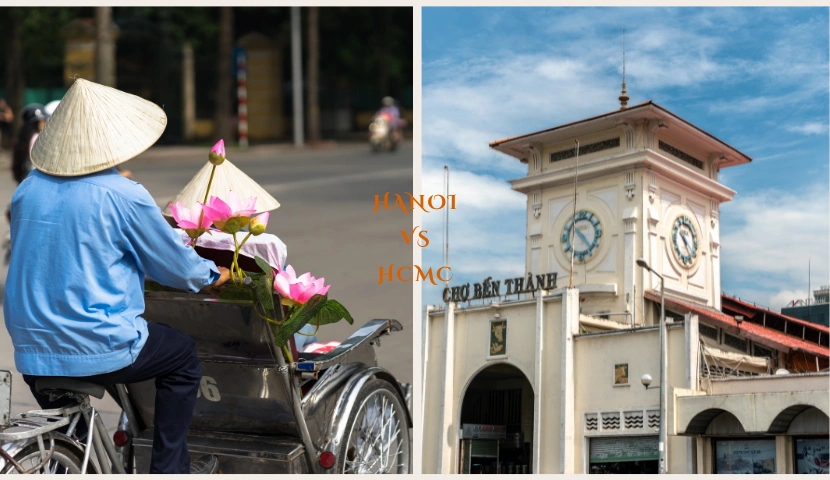
Travelers generally hold positive opinions about both Saigon (Ho Chi Minh City) and Hanoi, Vietnam's vibrant urban centers. Individual tourists will prioritize experiences based on their personal interests and travel style. Vietnam's versatility ensures there's something for everyone, from history buffs to beach bums and adventure seekers to budget backpackers.
Hanoi captivates visitors with its rich cultural heritage showcased in the Old Quarter's historic streets and temples, coupled with a renowned street food scene offering affordable and authentic culinary delights.
Saigon, on the other hand, impresses with its dynamic atmosphere, blending modern skyscrapers with colonial architecture, and boasting diverse dining options and lively nightlife.
Both cities serve as gateways to unique day trips, such as exploring the Cu Chi Tunnels from Saigon or visiting scenic wonders like Ha Long Bay from Hanoi. Despite their differences, travelers appreciate the unique charm, history, and culinary experiences that each city offers, making them popular destinations for exploring Vietnam's cultural richness and urban vitality. Find out what you like and plan your trip as soon as you can to explore these two beauties!
We hope our article that compares Hanoi and Ho Chi Minh City brings helpful information to you. Feel free to leave a comment below if you have any questions about this topic, and if you are looking for interesting tours in Vietnam to visit both Hanoi and Ho Chi Minh City (Saigon), click the button below, or contact our travel experts for the quickest support for itineraries, quotes, and promotions.
Best North & South Vietnam tours with prices
See more:
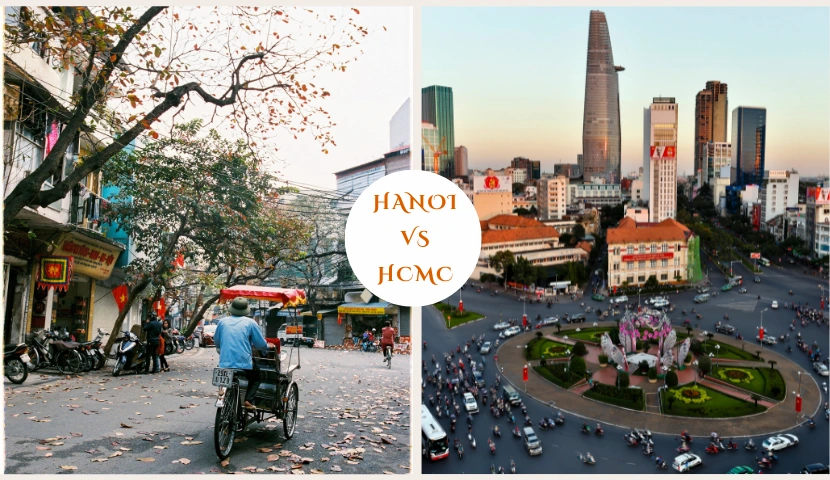










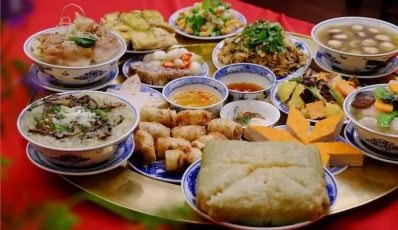


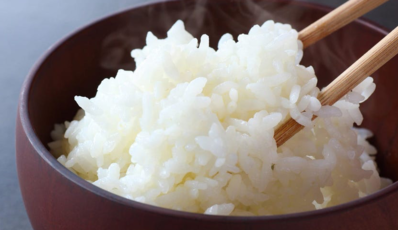

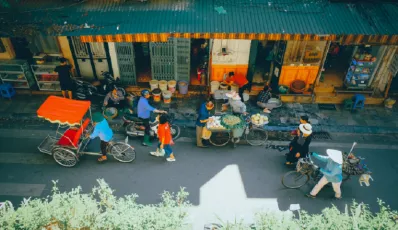

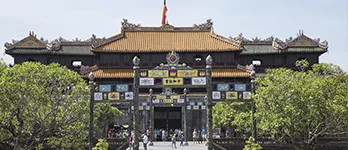
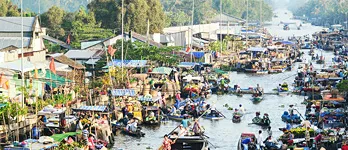

 TRAVELERS' CHOICE 2025
TRAVELERS' CHOICE 2025 